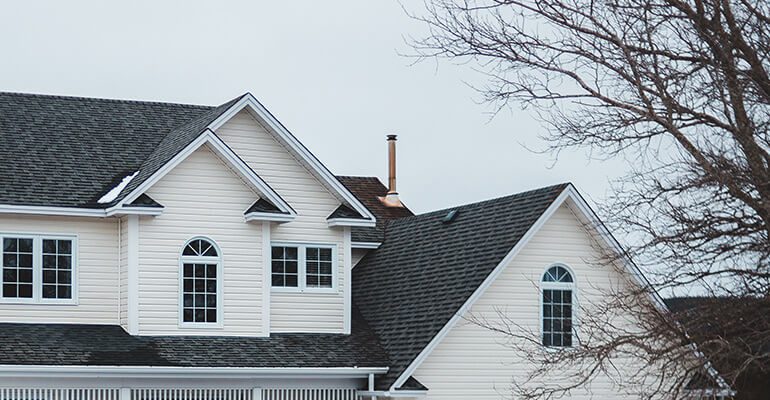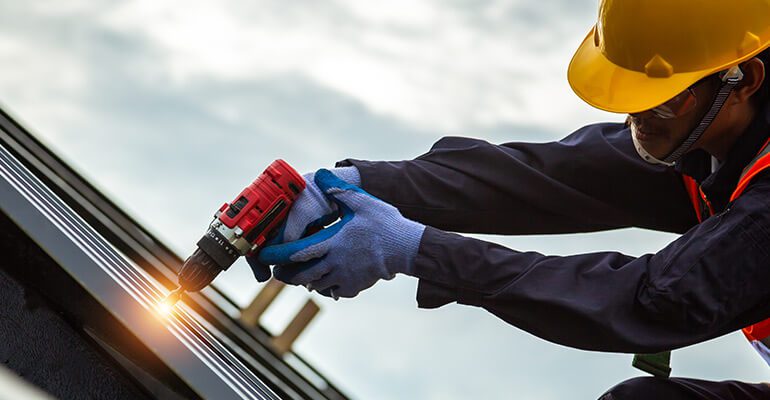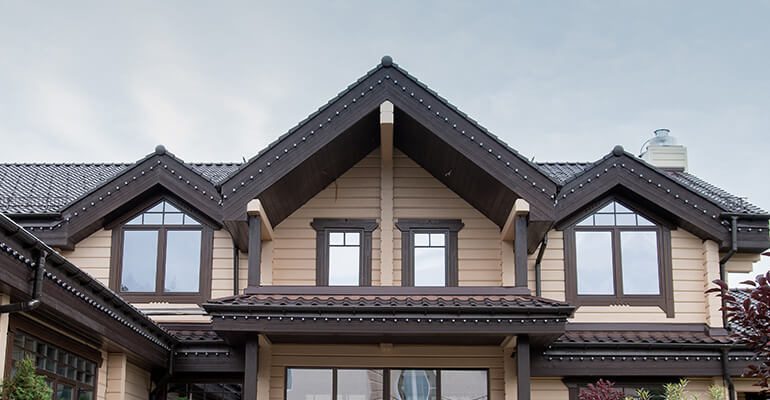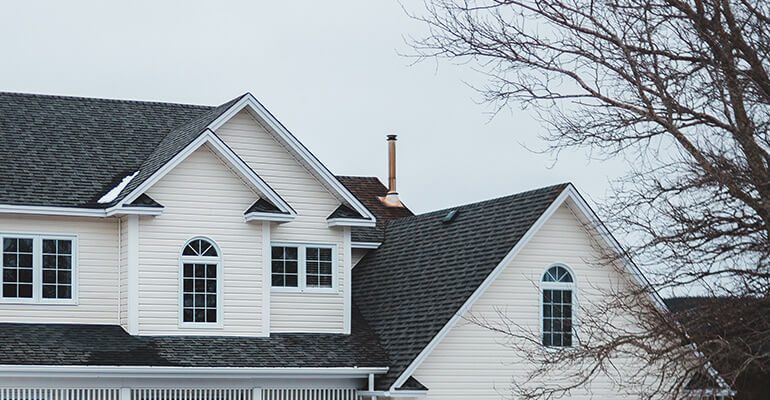All important info
on Flat roofing
Flat roofing systems are a type of roofing system that is used on commercial buildings and some residential properties. They are characterized by a flat or nearly flat surface, as opposed to the pitched or sloping surface of traditional roofs. Flat roofs are typically made from a variety of materials, including asphalt, rubber, and PVC, and require regular maintenance to ensure their longevity.
One of the main advantages of flat roofing systems is their simplicity and cost-effectiveness. They are typically easier and cheaper to install than pitched roofs, and may be a good choice for buildings with large, open spaces or those that are difficult to access. Flat roofs are also relatively easy to maintain and repair, as they have a relatively simple structure with few angles or slopes.
It’s also worth noting that flat roofing systems come in a variety of materials, each with its own set of benefits and drawbacks.
Despite their many benefits, flat roofs do have some limitations. They are not as good at shedding water as pitched roofs, and can be more prone to leaks and water damage if not properly maintained. Flat roofs are also more vulnerable to damage from extreme weather conditions, such as high winds and heavy rain.
To ensure the longevity and performance of a flat roof, it is important to choose a high-quality roofing material and to follow proper installation and maintenance practices. This may include regular inspections, repairs, and cleaning, as well as using protective coatings or membranes to seal and protect the roof.
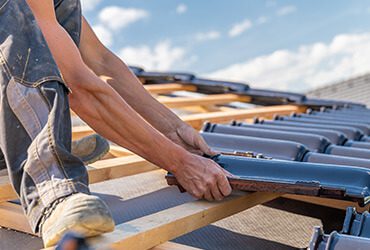
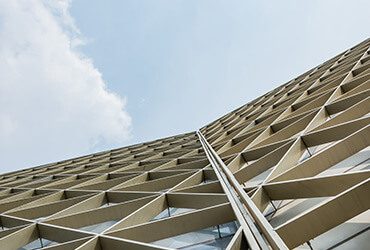
Overall, flat roofing systems can be a practical and cost-effective choice for commercial and residential buildings, provided that they are properly designed, installed, and maintained. By working with a reputable roofing company, you can ensure that your flat roof meets your needs and lasts for many years to come.
It’s important to consider the specific needs and budget of your project when choosing a flat roofing material. A reputable roofing company can help you determine the best material for your needs and provide expert installation and maintenance services.
Roof underlayment and flashing
Roof underlayment and flashing are two important components of a roofing system that play a crucial role in protecting a building from water damage. In this post, we will delve into the details of roof underlayment and flashing, explaining what they are, how they work, and why they are important.
Roof underlayment is a layer of material that is installed under the roofing material to provide an extra layer of protection for the roof. It is often made of a synthetic material such as felt paper, rubberized asphalt, or a synthetic polymer. Roof underlayment is installed on top of the roof deck and under the roofing material, and serves as a secondary water barrier in case the primary roofing material fails.
Roof flashing is an important component of a roofing system because it helps to prevent leaks and water damage to the roof and the building.
Roof flashing is a thin material, usually made of metal, that is used to seal the joints and seams on a roof. It is typically installed around areas of the roof that are prone to leaks, such as chimneys, skylights, and vents. Roof flashing is designed to prevent water from seeping through these joints and into the building.
Roof underlayment works by providing a layer of protection between the roof deck and the roofing material. It acts as a barrier to prevent water from seeping through the roof and into the building. When installed properly, roof underlayment can help to prevent leaks and water damage to the roof and the building.


Roof flashing works by sealing the joints and seams on a roof, preventing water from seeping through these areas and into the building. It is typically installed around areas of the roof that are prone to leaks, such as chimneys, skylights, and vents. When installed correctly, roof flashing helps to prevent leaks and water damage to the roof and the building.
Roof underlayment is an important component of a roofing system for several reasons. First and foremost, it provides an extra layer of protection against water damage. If the primary roofing material fails, the roof underlayment can help to prevent leaks and water damage to the roof and the building. In addition, roof underlayment helps to prevent moisture from accumulating on the roof deck, which can lead to rot and other types of damage.
Roof evaluation Facts
Roof evaluation is the process of assessing the condition of a roof in order to determine its current state and identify any potential issues or areas of concern. This is an important step for building owners and property managers to take in order to ensure the long-term health and protection of their building. In this post, we will delve into the details of roof evaluation, explaining what it is, how it is conducted, and why it is important.
Roof evaluation is the process of assessing the condition of a roof in order to determine its current state and identify any potential issues or areas of concern. It is typically conducted by a professional roofing contractor or building inspector and includes a thorough inspection of the roofing material, the condition of the decking, and the overall condition of the roof. The goal of a roof evaluation is to identify any issues that may need to be addressed in order to prolong the life of the roof and protect the building from water damage.
it is important to choose a reputable and experienced roof evaluation contractor in order to ensure a thorough and accurate assessment of the roof.
Roof evaluation is typically conducted by a professional roofing contractor or building inspector. The process typically involves a visual inspection of the roof from both the ground and the roof itself, if possible. The inspector will look for any visible signs of damage, such as missing or damaged shingles, leaks, or rot. They will also assess the condition of the decking and the overall condition of the roof. In some cases, the inspector may also use specialized equipment such as thermal imaging cameras or moisture meters to help identify any potential issues.
A typical roof evaluation will include a detailed assessment of the condition of the roof, including any visible signs of damage or wear and tear. It will also include an estimated lifespan for the roof, as well as any recommendations for repair or maintenance. In addition, the evaluation may include an assessment of the ventilation and drainage systems, as well as any other components of the roofing system that may need to be addressed.


Roof evaluation is an important step for building owners and property managers to take in order to ensure the long-term health and protection of their building. By identifying any issues with the roof early on, it is possible to address them before they become more serious and costly to fix. In addition, a roof evaluation can help to prolong the life of the roof by identifying any potential issues that may need to be addressed in order to maintain its integrity.
The frequency of roof evaluations will depend on the age and condition of the roof, as well as the climate in which the building is located. As a general rule, it is a good idea to have a roof evaluated at least once per year, particularly if the roof is older or has sustained any significant damage. In some cases, it may be necessary to have the roof evaluated more frequently, especially if the building is located in an area with harsh weather conditions or if the roof is showing signs of wear and tear.
Installing the new Roofing
Systems by Experts
Installing a new roofing system can be a significant investment, but it is an important aspect of maintaining the integrity and value of your home or business. A new roof can provide improved protection against the elements, enhance the appearance of your property, and increase energy efficiency. In this article, we will discuss the process of installing a new roofing system, including the steps involved and the factors to consider.
Before installing a new roof, it is important to assess the condition of the existing roof. This may involve visually inspecting the roof for signs of damage or wear, such as missing shingles, leaks, or rot, and performing tests to identify any underlying issues. A professional roofing contractor can provide a comprehensive assessment of the roof and recommend the best course of action, whether it be repair or replacement.
Installing a new roofing system is a major undertaking, but it can provide significant benefits for the protection, appearance, and energy efficiency of your home or business.
There are many different types of roofing materials to choose from, including asphalt shingles, metal, tile, and rubber. Each material has its own unique set of benefits and drawbacks, and the right choice will depend on the specific needs and budget of your project.
Before installing a new roof, the roof deck must be prepared to ensure a solid foundation for the new roofing system. This may involve repairing or replacing damaged or rotten decking, adding additional insulation or ventilation, or installing a moisture barrier.


Once the roof deck is prepared, the new roofing material can be installed. This process will vary depending on the type of material being used, but typically involves laying down a base layer of material, such as underlayment or flashing, followed by the top layer of roofing material. It is important to follow proper installation techniques and use the right tools and equipment to ensure a secure and long-lasting roof.
To ensure the longevity and performance of your new roof, it is important to follow a regular maintenance and repair schedule. This may involve cleaning the roof, inspecting for damage, and making repairs as needed. A professional roofing contractor can provide guidance on the appropriate maintenance schedule for your specific roofing material and location.
Roof repair recommendations
It is a good idea to be present during the repair work in order to ask any questions and get a better understanding of the condition of the roof. After the repairs are complete, the contractor should provide a written report outlining the work that was completed.
After completing the recommended roof repairs, it is important to maintain the roof in order to prolong its lifespan and protect the building from water damage. Some tips for maintaining the roof include:
Regular inspections of the roof can help to identify any potential issues early on and allow for timely repairs.
Clearing debris from the roof: Debris such as leaves and branches can accumulate on the roof and cause damage if not removed. Regularly clear the roof of any debris to help prevent damage. Inspecting the roof regularly: Regular inspections of the roof can help to identify any potential issues early on and allow for timely repairs.
Cleaning and maintaining the ventilation and drainage systems: Proper ventilation and drainage are important for the health of the roof. Regularly clean and maintain these systems to ensure that they are functioning properly. Seeking professional help: If you are unsure about the condition of your roof or if you notice any issues, seek the help of a professional roofing contractor. They can provide a thorough assessment of the roof and make any necessary repair recommendations.


Choosing a reputable and experienced roof repair contractor is also crucial in order to ensure that the recommended repairs are completed properly and effectively. By following these recommendations and properly maintaining the roof, it is possible to prolong its lifespan and protect the building from water damage.
Roof replacement Facts
Roof replacement is a significant investment, but it is an important one for the long-term health and protection of your home or business. In this post, we will delve into the details of roof replacement, explaining what it is, when it is necessary, and how to go about it.
Roof replacement is the process of removing an existing roof and installing a new one in its place. It is typically necessary when a roof has reached the end of its lifespan or has sustained significant damage that cannot be repaired. Roof replacement can involve the removal of the old roofing material, repair of any damaged decking, and installation of new underlayment and flashing, as well as the new roofing material itself.
To ensure that your new roof stays in good condition, it is important to perform regular maintenance and repairs as needed. This may include cleaning the roof and gutters.
There are several signs that a roof may need to be replaced. One of the most obvious is if the roof has reached the end of its lifespan. Most roofing materials have a lifespan of 20-30 years, depending on the type of material and the quality of the installation. If your roof is older than this, it may be time to consider replacement. Other signs that your roof may need to be replaced.
Before beginning the roof replacement process, it is important to properly prepare. This includes getting multiple estimates from reputable contractors, setting a budget, and obtaining any necessary permits. It may also be a good idea to remove any valuables or personal items from the attic or upper floors to protect them during the replacement process.


Choosing a reputable and experienced roofing contractor is an important step in the roof replacement process. It is important to do your research and get multiple estimates before making a decision.
The roof replacement process can take anywhere from a few days to a week or more, depending on the size and complexity of the roof.
Dormer vents for enhanced attic airflow
Dormer vents are a type of ventilation system that is installed along the slope of a dormer, which is a vertical extension of a building’s roof. These vents allow for the natural flow of air through the attic and can help to improve the ventilation of your home. Here are eight key points to consider when it comes to dormer vents:
Dormer vents can provide several benefits to your home, including improved attic ventilation, reduced energy costs, and increased comfort. Proper ventilation helps to regulate the temperature and moisture levels in your attic, preventing issues such as mold, rot, and ice dams.
The cost of dormer vents can vary depending on the type of vents and the scope of the project. Be sure to get estimates from multiple contractors.
There are several different types of dormer vents available, including static vents, wind turbines, and ridge vents. Static vents are passive ventilation systems that rely on the natural flow of air to ventilate the attic. Wind turbines are active ventilation systems that rely on the wind to turn a fan and ventilate the attic. Ridge vents are installed along the ridge of a roof and allow for the natural flow of air through the attic.
Dormer vents should be installed in a location that allows for effective ventilation of the attic. This may include the slope of the dormer, the position of the vents in relation to the roof, and the overall size of the vents.


Dormer vents are typically made from durable materials such as metal or plastic. Metal vents are known for their longevity and resistance to extreme weather, while plastic vents may be more affordable but may not be as durable.
Dormer vents typically require minimal maintenance, but it’s important to keep them clean and free of debris to ensure optimal performance. This may involve occasionally cleaning the vents with a soft brush or cloth.
Roofing and Energy efficiency
Energy efficiency is an important consideration when it comes to roofing, as the right roofing materials and design can help to reduce your energy costs and lower your carbon footprint. Here are eight key points to consider when it comes to roofing and energy efficiency.
Roof design: The design of your roof can impact its energy efficiency. Factors to consider include the slope and pitch of the roof, the direction it faces, and the type of materials used. A sloped roof that faces south can be more energy efficient, as it can help to capture solar energy and reduce the amount of heat entering the home.
Adequate ventilation is essential for a healthy and energy-efficient home. Proper ventilation helps to regulate the temperature and moisture levels in your attic, preventing issues such as mold, rot, and ice dams.
There are several types of roofing materials that are known for their energy efficiency, including metal, rubber, and reflective shingles. Metal roofing is a durable and energy-efficient option, as it reflects sunlight and heat, reducing the amount of energy needed to keep your home comfortable. Rubber roofing is also energy efficient, as it has a high thermal resistance and can help to keep your home cool in the summer. Reflective shingles are another energy-efficient option, as they reflect sunlight and heat, reducing the amount of energy needed to cool your home.
Proper insulation is also important for energy efficiency, as it helps to keep your home warm in the winter and cool in the summer. There are several types of insulation available, including fiberglass, cellulose, and spray foam, each with its own unique properties. Be sure to choose an insulation material that is appropriate for your home and to ensure that it is properly installed for optimal performance.


Adequate ventilation is essential for a healthy and energy-efficient home. Proper ventilation helps to regulate the temperature and moisture levels in your attic, preventing issues such as mold, rot, and ice dams. There are several different types of ventilation systems available, including static vents, wind turbines, and ridge vents.
There are several energy-efficient roofing products available on the market, including solar panels and cool roof coatings. Solar panels can help to generate electricity for your home and reduce your energy costs.
Balancing ventilation
Balancing ventilation is the process of ensuring that your home has the right amount of ventilation to maintain optimal conditions in the attic. Proper ventilation helps to regulate the temperature and moisture levels in your attic, preventing issues such as mold, rot, and ice dams. Here are eight key points to consider when it comes to balancing ventilation in your home.
Balancing ventilation is important for the health and efficiency of your home. Without proper ventilation, the temperature and moisture levels in your attic can become too high or too low, leading to a range of issues.
Types of ventilation: There are several different types of ventilation systems available, including static vents, wind turbines, and ridge vents. Static vents are passive ventilation systems that rely on the natural flow of air to ventilate the attic. Wind turbines are active ventilation systems that rely on the wind to turn a fan and ventilate the attic. Ridge vents are installed along the ridge of a roof and allow for the natural flow of air through the attic.
Proper maintenance is important for the longevity and effectiveness of your ventilation system. This may involve cleaning the vents regularly and checking for any damage or issues.
It’s important to choose the right size and number of ventilation systems for your home. Factors to consider include the size of your attic, the type of ventilation system being used, and the climate you live in.
Balancing the intake and exhaust of your ventilation system is important for optimal attic conditions. Intake vents, such as soffit vents, allow air to enter the attic, while exhaust vents, such as static vents or wind turbines, allow air to escape. Ensuring that the intake and exhaust vents are properly balanced can help to regulate the temperature and moisture levels in your attic.


Location: The location of your ventilation system can also impact its effectiveness. Ventilation systems should be placed in areas that allow for effective airflow, such as along the eaves or gables of the roof.
Ventilation systems are typically made from durable materials such as metal or plastic. Metal vents are known for their longevity and resistance to extreme weather, while plastic vents may be more affordable but may not be as durable.

